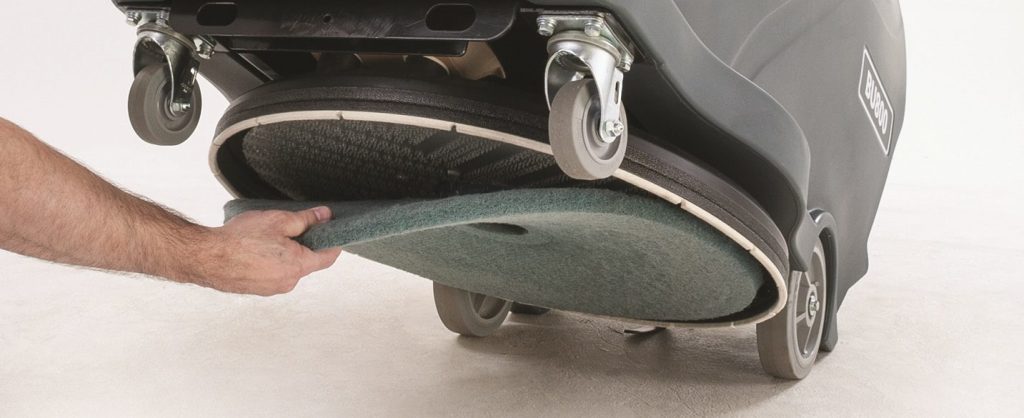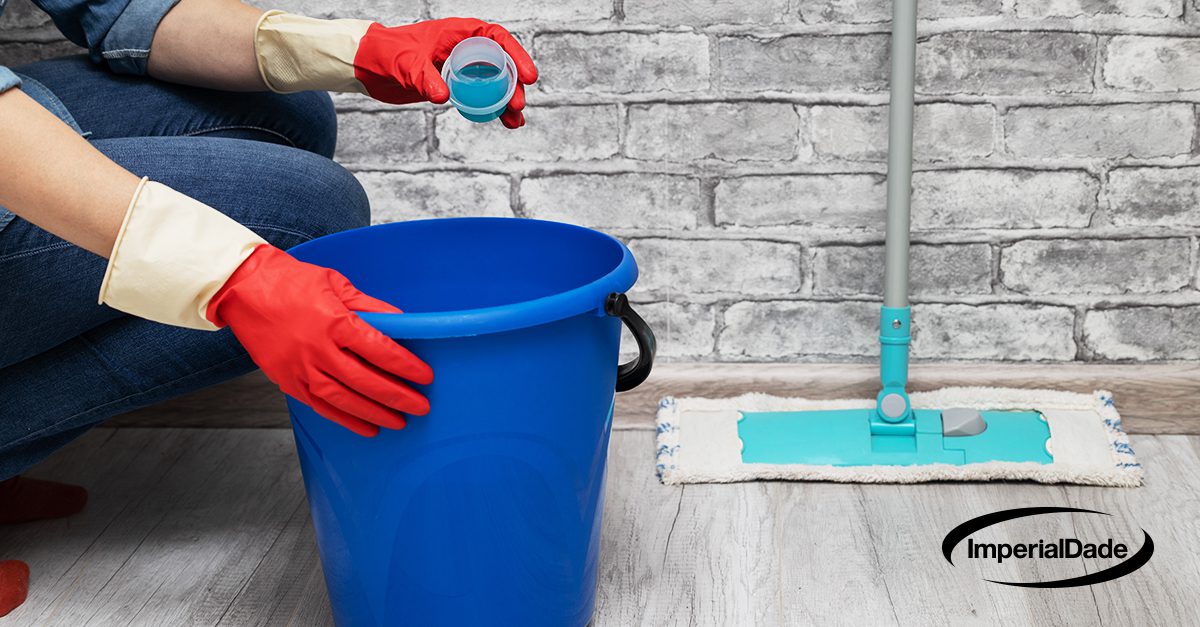Sticky floors are inevitable.
All day, people walk on the floors of your facility. Whether they know it or not, each time they come in from outside, or make a trip to the restroom, they’re tracking dirt, soil, and other debris across the floor.
Usually, it’s a simple fix; mop the floors with clean water and a light chemical agent.
But what if the floor is sticky after mopping? To make matters worse, what if the floor is sticky because of mopping?
In this article, we’ll answer two common questions: “why is my floor sticky after I mop” and “how to prevent sticky floors after mopping”.
We’ll cover everything you need to know about sticky floors after mopping, including the two common cleaning mistakes that lead to sticky floors, the best way to clean sticky floors, and how you can prevent this from happening again.
Now, let’s take at which two mistakes often lead to sticky floors after mopping.
Why is My Floor Sticky After I Mop?
Most of the time, if your floor is sticky after mopping, it’s because the last person to mop the floor made one of these mistakes.
- Diluting Chemicals Incorrectly
- Used an Alkaline Cleaner
Before going over how to prevent these mistakes from happening, let’s look at how they lead to sticky floors.
Diluting Chemicals Incorrectly
Depending on how a cleaning solution is mixed, there can be two outcomes.
If not enough chemical is used, or too much water is added, then the floor is essentially just getting a rinse. There is no disinfection or “cleaning” taking place.
However, if too much chemical is used, or not enough water, then the solution will be too strong. Oftentimes, a solution with too much cleaner will result in sticky floors.
This is especially true if you’re using an alkaline cleaner.
Used an Alkaline Cleaner
An alkaline cleaner is any cleaning product that has a pH value of 8 or higher.
Bleach, for example, has a pH of 11-13. It follows that bleach-based cleaners are alkaline.
All-purpose cleaners usually range from a pH of 6-8. As a result, many all-purpose cleaners are slightly alkaline.
The problem with alkaline chemicals is that they are likely to leave behind residue. The residue is incredibly sticky, causing the floors to feel sticky as well.
How to Prevent Sticky Floors After Mopping
There are two key ways to prevent sticky floors after mopping:
- Follow the Recommended Dilution Guidelines
- Use a Neutral Floor Cleaner
Follow the Recommended Dilution Guidelines
Proper dilution is crucial to the success of most cleaning procedures that require the use of chemical products.
It’s for that reason we always recommended following the manufacturer’s directions regarding dilution.

Most times, these directions can be found on the product’s label. If you’re unable to find the recommended dilution on the label, then you can always check the product page on the manufacturer’s website.
If you’re unable to find any information online, then your best bet is to call the manufacturer directly and check with them.
Use a Neutral Floor Cleaner
Using a neutral floor cleaner is the best way to avoid sticky floors after mopping.
Neutral floor cleaners, unlike alkaline-based cleaners, have a pH of 7. Because it’s neutral, it isn’t going to leave behind a sticky residue after mopping.
How to Fix Sticky Floors After Mopping
Fortunately, it’s pretty easy to get your floors back to normal. Where it becomes a little more involved is when there’s a thick layer of sticky residue, or if the leftover chemical or slurry has been sitting on the floor for a long time.
Ideally, you want to address sticky floors as soon as you notice, hopefully right after they’ve been mopped. If the leftover residue is still fresh, or it’s just a thin layer of sticky residue, then it can be taken care of by using a wet mop and plain, cool water to rinse the floor.
If the floor is still sticky, swap out your mop for an autoscrubber equipped with a red pad. The red pad is the best choice for this cleaning process because it isn’t too abrasive, so it won’t cause any damage to the floor or the floor finish.
However, if the red pad isn’t enough to remove the sticky residue, you’ll have to opt for a blue pad. A blue pad is noticeably more abrasive than a red pad and it’s often used heavy-duty scrubbing.

Final Thoughts
Sticky floors can be a major nuisance, especially for the janitorial team members who have to reclean the floors.
Ensure that cleaning staff are following proper dilution guidelines and using a neutral floor cleaner, to prevent sticky floors after mopping and to avoid reworks.
If you still need help or are looking to provide your team with formal training on these procedures, reach out to an Imperial Dade Specialist today.
One of our chemical or floor care specialists will be happy to set up a free onsite or virtual evaluation of your floorcare operation. Using their knowledge and experience, they’ll recommend the best course of action for your business moving forward. Our Specialists can also recommend the best Imperial Dade Cleaning Institute course to optimize your cleaning team and help them get better results.
Check Out These Related Articles:
- Flat Mop vs String Mop: The Benefits of Using a Flat Mop
- Commercial Floor Mops 101: The Best Wet Mop for Every Application
- Ultimate Guide To Achieving Great Looking Commercial Hard Floors
- Commercial Wet Mops: How to Use a Mop & The Best Way to Clean a Mop
- Neutral Floor Cleaner Vs Floor Neutralizer: When and How To Use
- How To Use An Auto Scrubber To Clean Your Commercial Hard Floors
